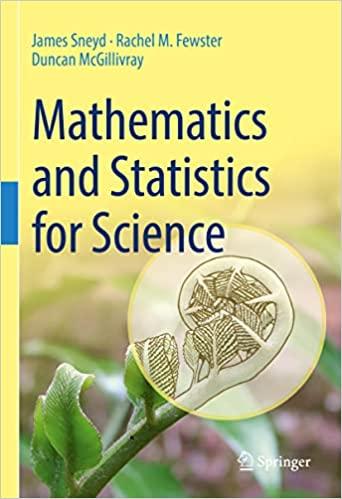The Gompertz equation was first derived in 1825 and is now often used to model populations, particularly
Question:
The Gompertz equation was first derived in 1825 and is now often used to model populations, particularly of tumour cells.
One well-known example of this is the work of Anna Laird, who was one of the first to use the Gompertz equation to describe the growth of a population of tumour cells (Laird, 1964), as shown in Fig. 4.14.
If N(t) is the number of tumour cells, then the Gompertz equation is N(t) = N0e A
α
(1−e
−αt
)
, for some (positive) constants N0, A and α.
a. What are the units of N0, A and α?
b. Show that N(0) = N0.
c. The Gompertz equation can also be written in the form N(t) = keln(N0/k)e
−αt
.
First show that, in this new way of writing the equation, we still have N(0) = N0. Then, show that when k = N0e A α
these two versions of the Gompertz equation are the same.
d. How long does it take for N to increase from N0 to 2N0?
Show that this doubling time exists only when α ln(2) < A.
When this condition is satisfied, how do you know that the doubling time is always positive?
Step by Step Answer:

Mathematics And Statistics For Science
ISBN: 9783031053177
1st Edition
Authors: James Sneyd, Rachel M. Fewster, Duncan McGillivray






